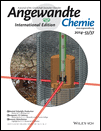Coordination-Driven In Situ Self-Assembly Strategy for the Preparation of Metal–Organic Framework Hybrid Membranes†
We thank Dr. Zhiyong U. Wang of Troy University for helpful discussions. This research was financially supported by the NSFC (No. 21176007, 21271015, 21322601), the Program for New Century Excellent Talents in University (No. NCET-13-0647), the National High Technology Research and Development Program of China (No. 2012AA03A607), and Beijing Municipal Natural Science Foundation (No. 8122010, 2132013).
Graphical Abstract
Mopping up the mess: A hybrid membrane composed of the metal–organic framework (MOF) ZIF-8 and poly(sodium 4-styrenesulfonate) was prepared by a coordination-driven in situ self-assembly method. The MOF particles were well-dispersed in the polymer in the resulting stable membrane (see picture), which showed excellent performance in the nanofiltration and separation of dyes from water.
Abstract
Metal–organic frameworks (MOFs) have emerged as porous solids of a superior type for the fabrication of membranes. However, it is still challenging to prepare a uniformly dispersed robust MOF hybrid membrane. Herein, we propose a simple and powerful strategy, namely, coordination-driven in situ self-assembly, for the fabrication of MOF hybrid membranes. On the basis of the coordination interactions between metal ions and ligands and/or the functional groups of the organic polymer, this method was confirmed to be feasible for the production of a stable membrane with greatly improved MOF-particle dispersion in and compatibility with the polymer, thus providing outstanding separation ability. As an experimental proof of concept, a high-quality ZIF-8/PSS membrane was fabricated that showed excellent performance in the nanofiltration and separation of dyes from water.





